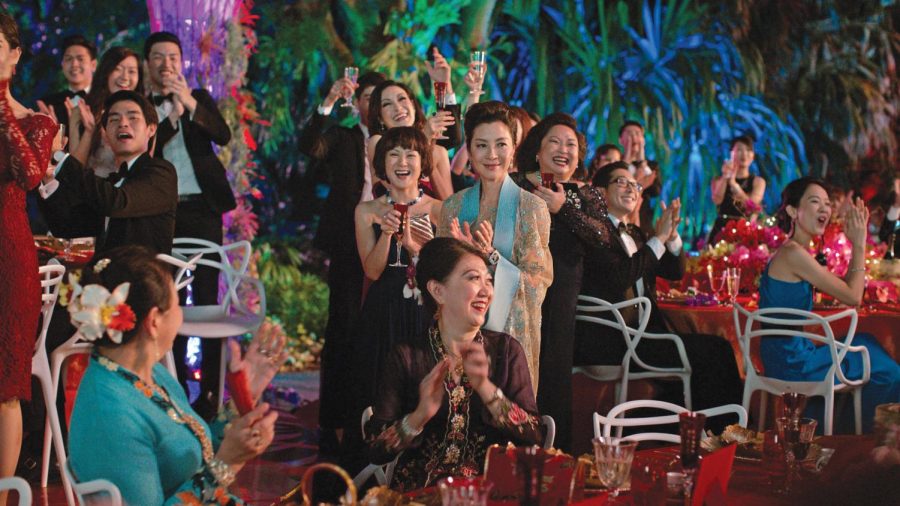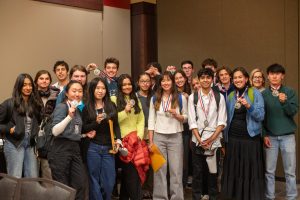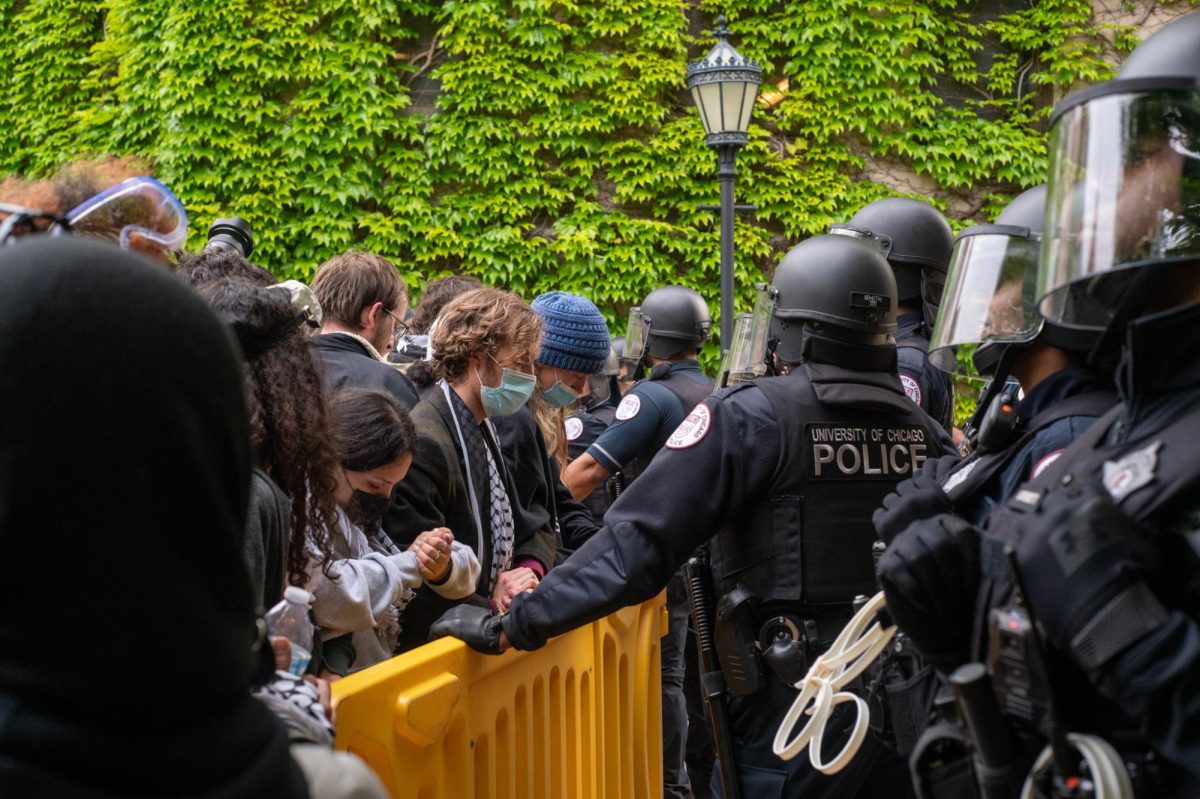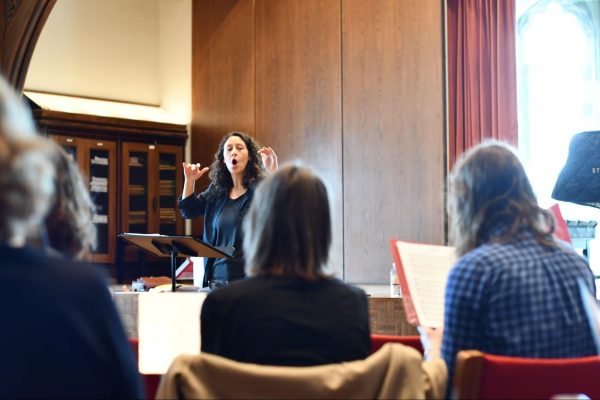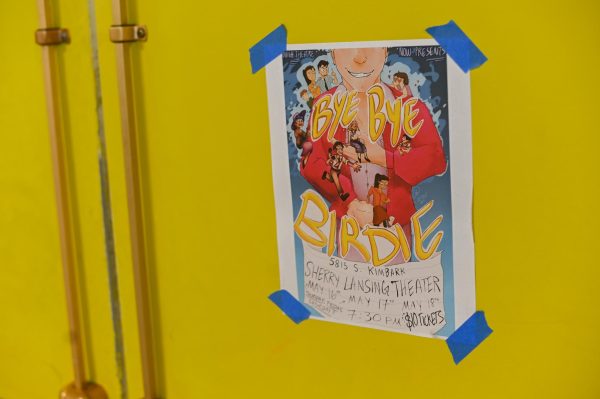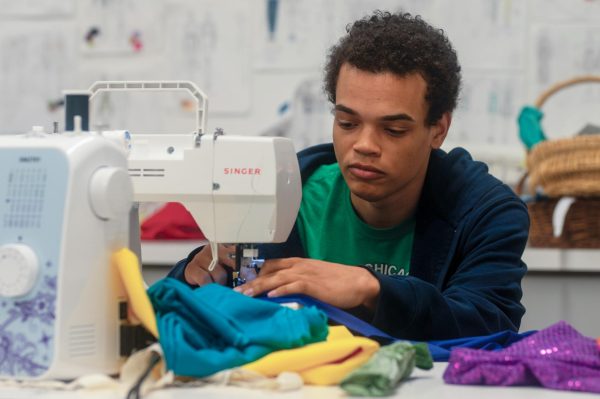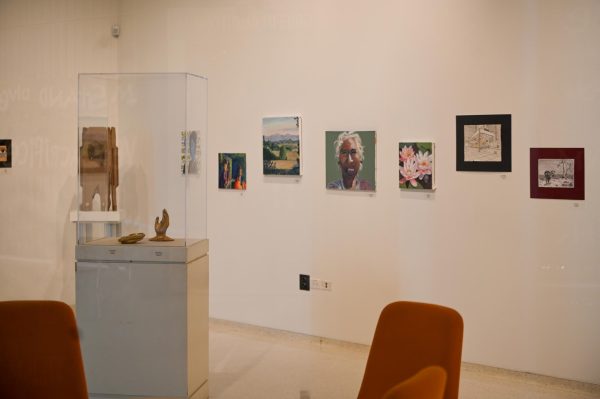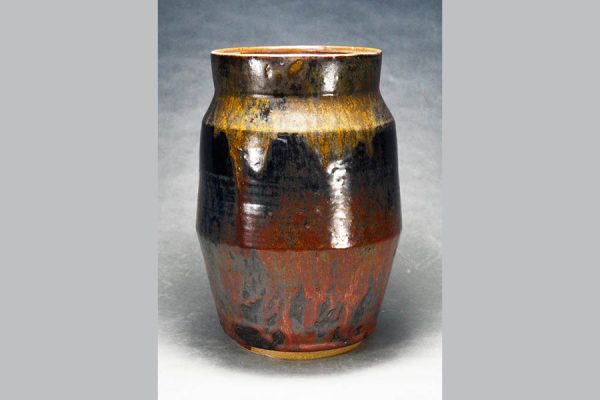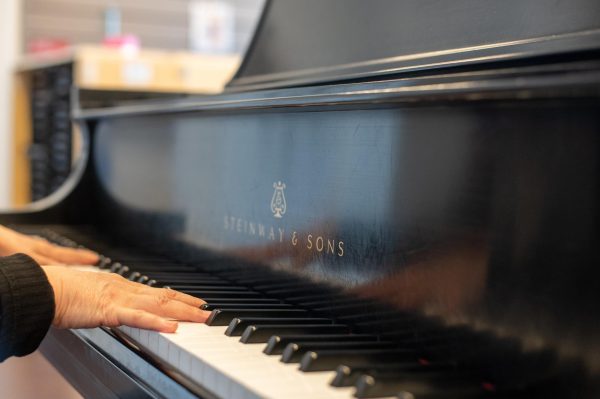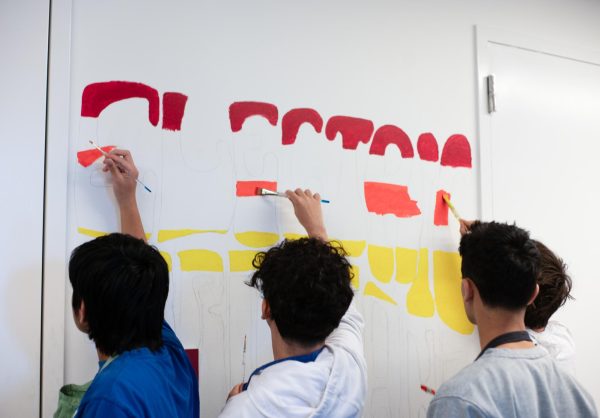Moment to Movement
The latest movies starring Asian-Americans and Asians provide glances of a more diverse Hollywood, but inspired audiences hope to see it continue into a perpetual movement
IMDb
ASIAN CELEBRATION. In “Crazy Rich Asians” based on Kevin Kwan’s best-selling novel of the same name, Nick Young’s mother, extended family and friends celebrate his friend’s wedding in Singapore. “Crazy Rich Asians,” the first major film to feature an all-Asian cast since “The Joy Luck Club,” joins “To All the Boys I’ve Loved Before” and “Searching” to represent Asian-Americans in popular culture.
November 15, 2018
It’s been 25 years since the first movie with a majority Asian cast, “The Joy Luck Club,” made its debut in 1993, showing Asians without the long history of stereotypes that previously characterized them on screens, or whites portraying Asians with those stereotypes. This year the film industry is experiencing firsts again, and members of the U-High community praise the increase in representation.
Asian-Americans are shining in the latest mainstream entertainment. “Crazy Rich Asians,” released Aug. 17, started off a moment some called “Asian August,” a range of movies released that month. These movies starred Asian-Americans in lead roles, such as an all-Asian cast in rom-com “Crazy Rich Asians,” a female Vietnamese-American lead in “To All the Boys I’ve Loved Before” and Korean-American leads in the thriller “Searching.”
The popularity of these movies and other media provide representation and conversation, not only for Asian-Americans but also with a wider audience, as well as with the U-High community.
Reactions
Rosalind Chao, who played Rose in “The Joy Luck Club,” hoped the movie would be “a new beginning for Asian-Americans,” according to The New York Times. The actresses in Wayne Wang’s movie were praised and received high-profile offers.
However, Asian roles are still either being rewritten into white roles, or played by white actors, such as last year when Scarlett Johansson played the Japanese lead in “Ghost in the Shell.”
As Ryan Lee, a U-High senior, sees it, backlash against Hollywood’s lack of representation and decades of whitewashing is building up more and more over time, creating urgency to correct it.
“There’s kind of a push to get more actual Asians out into the media,” Ryan said.
“Crazy Rich Asians,” based on Kevin Kwan’s bestselling novel of the same name, has already surpassed $170 million in the domestic box office, and $230 million internationally. In addition, Jeff Goldstein, Warner Bros.’ distribution chief, reported that only 38 percent of audience members over the opening weekend were Asian, according to Los Angeles Times.
Initially, the director of “Crazy Rich Asians,” Jon M. Chu, and Kwan turned down an offer from Netflix that was bigger than what the box office promised. They declined so they could play the movie at the theaters, according to an interview with CBS, intending to gauge the box office numbers, since Netflix does not release those statistics, to show that this movie with an all Asian cast has an audience, and people want to see it, as well as bring people together to start conversations about the movie.
Kara Xu, a sophomore, saw “Crazy Rich Asians,” and was surprised at its popularity.
“It was surprising how amazing the production was for this movie,” Kara said, “because a lot of people think the white majority are in movies and that all of the super famous stars are like white or like different nationalities. Asians aren’t really, like, predominantly in movies that are that popular. I was really surprised that this one really took off.”
Adapting a film from a book and intentionally preserving an Asian lead character and representation tells a story from that perspective. The movie would turn out to be a different story if the role isn’t the original.
I think that’s what they were trying to do, to humanize an experience regardless of where people lived or where people grew up. — Aria Choi, U-High counselor
Jenny Han, who wrote “To All the Boys I’ve Loved Before,” was first approached by producers to have the Korean-American Lara Jean rewritten, but Han stood her ground and rejected all of those offers.
Finally, Will Smith’s production company, Overbrook Entertainment partnered with Awesomeness Films to bring the movie to life. In an interview with People, Han said “the fact that the lead was Asian American wasn’t seen as a liability. It was something they were excited about.”
In one scene in “To All the Boys I’ve Loved Before,” Lara Jean takes out a Korean yogurt drink for her boyfriend Peter Kavinsky. This was the most memorable scene for U-High counselor Aria Choi and her Korean-American friends since the appearance of the probiotic drink popular among Asians and Asian-Americans was normalized in the movie, not out of place or weird.
“Something as simple as seeing a symbol that was so representative of childhood memories was, like, an immediate draw to be connected to the characters in the story,” Ms. Choi said. “It was like a sense of nostalgia connection familiarity and pride that came with that.”
In an interview with The Hollywood Reporter, Chu explained that “Crazy Rich Asians” was perfect to show a different side of Asians in the media — “Contemporary, stylish, at the top of art and fashion, emotional, funny, sarcastic and unapologetic. Confident.”
According to The Guardian, Rachel Chu’s character in “Crazy Rich Asians” has to be Asian-American in order to describe the specific feelings of belonging she experiences when she travels to Singapore to meet her boyfriend’s family — the differences of being both Asian and American but not really fitting into either side is something many people in the world relate to.
Going forward
Even outside of the film industry, Asian-Americans and Asians are becoming more influential and popular. After the release of “Crazy Rich Asians,” Awkwafina, who plays Peik Lin in the movie, became the second Asian woman to host a “Saturday Night Live” in 18 years.
After seeing Asian-American movie stars then and now getting their big breaks through those movies in other fields, Kara said the public’s view on Asian-Americans has changed.
“I think people, producers and directors are seeing how talented other people can be, no matter what the race or gender or anything is,” Kara said. “It’s super surprising being able to see all these Asians, like movie stars, becoming so popular and getting their big break through movies.”
There’s also been an appearance of Asians in music, especially debuting in the United States. BTS, a Korean-pop music group, recently released a collaboration with Nicki Minaj on the song “Idol,” and have received a Billboard Music Award and an American Music Award. Another group, NCT, this year hit number 1 on the Billboard Emerging Artists chart, the first K-pop group to do so.
Just like “Crazy Rich Asians” director Jon M. Chu and many others, Ms. Choi wants to see this moment continue into a movement to make sure Asian-American voices and stories are heard. According to Ms. Choi, the people who worked on “Crazy Rich Asians” were trying to humanize a common experience and themes that are universal, such as love, family, conflict, allegiance, the sense of approval and sense of belonging.
“Those are themes that are so universal that hopefully transcended race, ethnicity and culture,” Ms. Choi said. “I think that’s what they were trying to do, to humanize an experience regardless of where people lived or where people grew up.”



